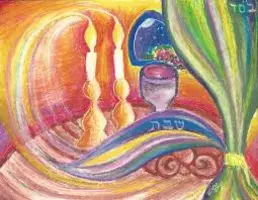The Torah records Moses’ reaction to the sin of the Golden Calf—shattering the stone tablets engraved by G-d. But why did he break them rather than return them to G-d? And why did the broken fragments remain in the Ark alongside the second set of tablets?
The Torah itself identifies this act as Moses’ crowning achievement. In his final tribute, it states that his greatest deed was breaking the tablets. Rashi explains that G-d affirmed this decision, saying, “Thank you for breaking them.” This seemingly paradoxical praise reveals a profound lesson: spirituality is not only found in wholeness but also in brokenness.
The presence of both whole and shattered tablets in the Holy of Holies teaches that holiness exists not just in spiritual perfection but also in the struggles and fractures of human existence. The broken tablets symbolize moments of despair, failure, and alienation—yet they are still sacred. Moses demonstrated that even when life feels shattered, it is possible to transform brokenness into holiness.
True faith does not ignore human imperfection; rather, it embraces the struggles of the soul. The Torah ends with this message to remind us that our broken places can become a source of light, meaning, and even sanctity. As one Rebbe put it, “There is nothing more whole than a broken heart.”

